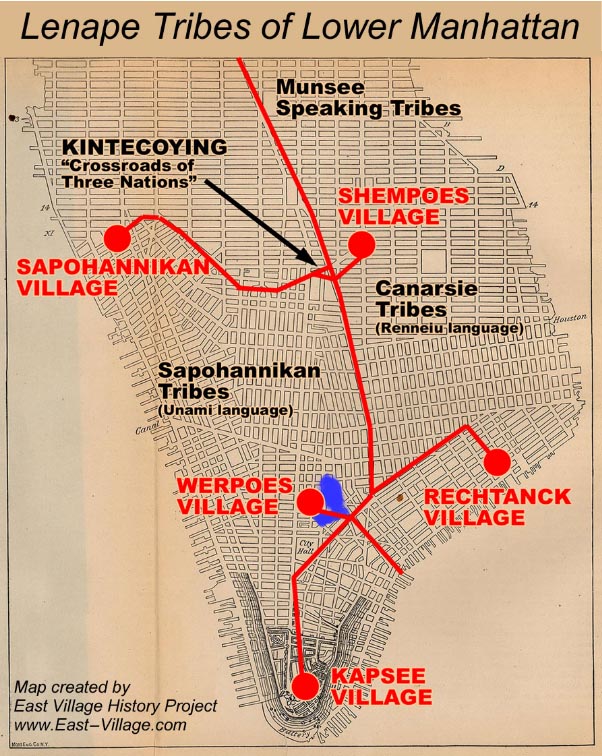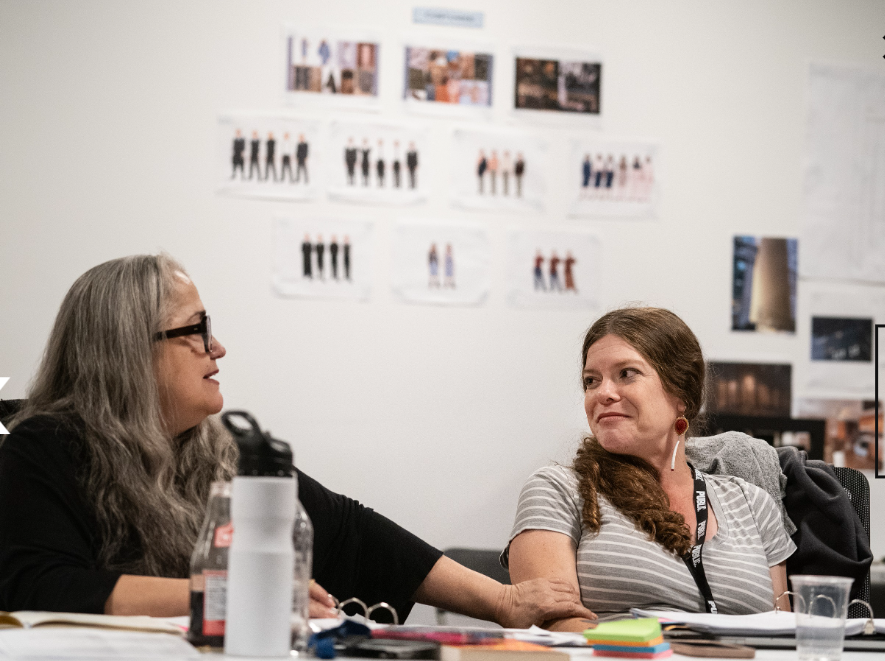The Public Theater’s Manahatta and the Confluence of Three Nations at Astor Place
The Public Theater is opening a significant new play, Manahatta, by Native attorney, activist, and playwright Mary Kathryn Nagle. It is fitting that this important piece of theatrical literature will be produced on the spot where, 500 years ago, the confluence of three nations, known as “Kintecoying,” was located.

The area that is today Southern New York, New Jersey, Eastern Pennsylvania, and Delaware was for many years inhabited by Native Americans known as the Lenape (“the people”). Referred to as “the Delaware” by English-speaking colonists, the group had a strong presence on Manhattan Island. Astor Place, in fact, follows the path of an old Native American trail that appears on maps of Manhattan at least as early as 1639 — only a decade or so after the Dutch first settled on the island. In its early days, the trail was used to connect the present‐day Bowery to a trading post on West 14th Street.

Kintecoying, literally meaning “crossroads of three nations,” the area now known as Astor Place, and where The Public Theater is located, was where the three Native American groups that inhabited this part of New York in the 16th Century — the Canarsie, the Sapohannikan, and the Manhattan — converged. Though they lived in close proximity, each group spoke a different language. It was here that their major trails intersected, and a central meeting point was established. Leaders from each group would discuss issues, trade, and play games, including bagettaway, which we now call lacrosse.

Mary Kathryn Nagle wrote her first plays as an undergraduate at Georgetown, where she majored in peace and justice studies and acted in student productions. One of the plays in which she performed was Cloud 9 by Caryl Churchill, in which the same cast portrays a rigidly patriarchal family at the height of British imperialism in the first act, and in the second act, a century later, they portray descendants of that family, in sexually fluid post-colonial London. “There was an artistic statement in her (Churchill’s) doubling that you can only do in theater,” Nagle said. “There’s something about watching a live, human actor go from one character to another.” This technique has become a hallmark of Nagle’s style: her plays overlay the past and the present to reveal patterns that persist.

In 2012, Nagle received a fellowship to be part of the prestigious Emerging Writers Group at the Public Theater. She spent part of her time there workshopping Manahatta, a chronicle of land fraud against the Lenape people by Dutch colonists in the seventeenth century and Lehman Brothers in the twenty-first. One actor plays Jane Snake, a financial analyst newly hired on Wall Street, and also Le-le-wa’-you, a Lenape fur trader; another portrays a chief of mortgage-backed securities at Lehman Brothers and also the head of the Dutch West India Company, bent on turning communal, matrilineal land into private property. The Public Theater staged a workshop performance of the play in 2014. At the time, Nagle was close to giving up on getting produced. “Theaters didn’t know how to read scripts about Native people,” said Nagle. “They don’t know how to judge what’s authentic or what’s not. All they know is what they’ve seen in Western movies or on the back of a football jersey.”
But two years later, the Oregon Shakespeare Festival in Ashland, Oregon, one of the country’s largest repertory theatres, announced that it would produce Manahatta in its 2018 season. And now, 9 years after she first workshopped the play at The Public, it is being given a full-scale production.

Combatting Native erasure is an essential project for Nagle. At the end of Manahatta, the character Jane Snake says, “We are still here.” In the theater, the line has a double resonance. The Lenape have not been wiped out from the continent, despite centuries of genocide and colonialism, and they are physically present, onstage, at that moment.
Manahatta runs at The Public from November 16th through December 23rd, 2023. You can access The Public’s website to purchase tickets here.
To explore more information about Native American arts and history in our neighborhood, check out these links:
Contemporary Native American Art Sites
Native American Poet, Diane Burns
The Native American Community House
Art and Archives of the Native American Community House
Rodman Wanamaker and the Native American Memorial
Connections between the East Village and Bartlesville, Oklahoma
